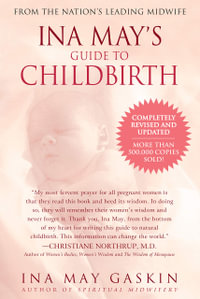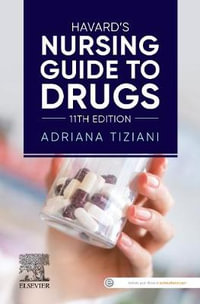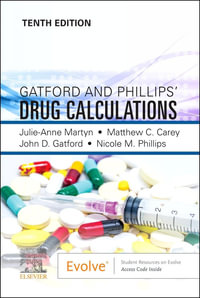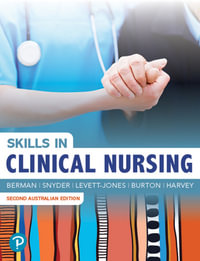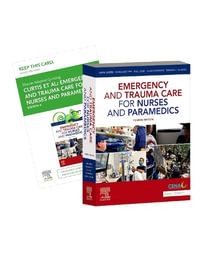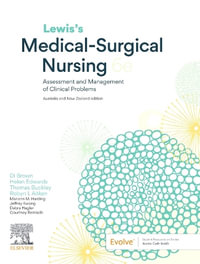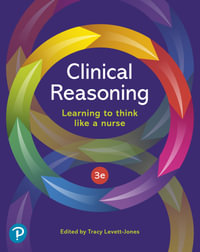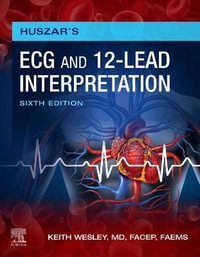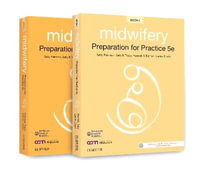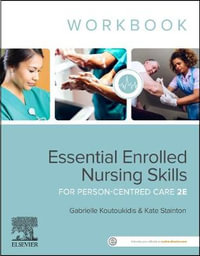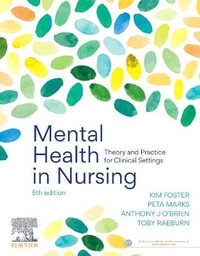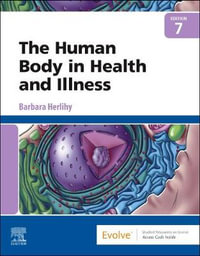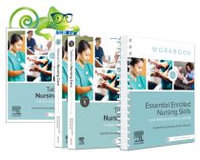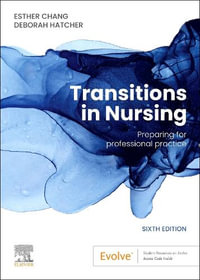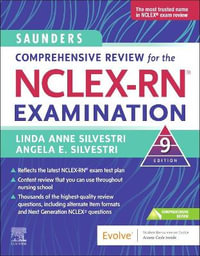
Kozier and Erb's Fundamentals of Nursing, Volumes 1-3 + Skills in Clinical Nursing + Nursing Student's Clinical Survival Guide
5th Edition
By: Audrey Berman, Geralyn Frandsen, Shirlee Snyder, Tracy Levett-Jones, Adam Burston
5 November 2020 | Edition Number 5
At a Glance
9.7 x 28.2 x 29.8
RRP $261.95
$195.25
25%OFF
or 4 interest-free payments of $48.81 with
orSkills in Clinical Nursing
The 2nd edition of Skills in Clinical Nursing provides a primary Australian resource, preparing undergraduate nursing students to become skills-competent nurses, as well as providing practicing nurses with a highly relevant reference. The text acts as a visual manual, helping students learn to link theory to practice, developing their clinical skills and underpinning industry requirements.
The new edition has been updated to address the latest research as well as emerging needs of clinical nursing students in the Australian context.
Kozier and Erb's Fundamentals of Nursing, Volumes 1-3 5th Edition
The 5th Australian edition Kozier & Erb's Fundamentals of Nursing continues to setting the foundation for nursing excellence amid ongoing changes to the regulation of nursing.
For undergraduate nurses, the product covers key concepts in contemporary nursing such as delivering inclusive nursing practice, as well as discussing the latest nursing evidence, standards, and competencies.
Aligned with current nursing standards, the 5th edition helps students link their theoretical knowledge to clinical practice.
New to this edition
- Updated Research Notes, Real World features and images to reflect contemporary Australian and New Zealand research, clinician stories and evidence-based practice.
- Updated to include recent changes to the NSQHS standards, including:
- Comprehensive care
- Communication for safety
- mental health and cognitive impairment
- health literacy
- end-of-life care
- Aboriginal and Torres Strait Islander health.
- The Patient Safety Competency Framework (PSCF) for Nursing Students are integrated throughout the chapters, with practical examples on how the safety domains can be applied in practice.
- Addition of a new chapter focused on Disability, allowing for a more thorough understanding of disability and how it is related to different topics of nursing
- The Fundamentals of Care Framework is integrated throughout, showing how each of the three dimensions can be applied to nursing practice by way of application to case study questions throughout the text.
- Learning outcomes and examples are mapped to the relevant Nursing and Midwifery Board of Australia (NMBA) Registered Nurse Standards for Practice and Patent Safety Competency Framework document.
Nursing Student's Clinical Survival Guide
This quick-reference guide is not rivalled by anything else in the market. As a support text, Reid-Searl's Nursing Student's Clinical Survival Guide assists students with tips to competently conduct clinical skills for safe and person-centred care in clinical settings.
- VOLUME 1
- Unit 1 The Nature of Nursing
- 1 Historical and Contemporary Nursing Practice
- 2. Nurse Education, Research and Evidence-Based Practice
- 3 Nursing Theories and Conceptual Frameworks
- 4 Legal Aspects of Nursing
- 5 Values, Ethics and Advocacy
- Unit 2 Contemporary Health Care
- 6 Health Care Delivery Systems
- 7 Community Health Nursing
- 8 Home Care
- 9 Regional & Remote Nursing
- 10 Health Information and Communication Technology
- Unit 3 The Nursing Process
- 11 Critical Thinking and the Nursing Process
- 12 Assessing
- 13 Diagnosing
- 14 Planning
- 15 Implementing and Evaluating
- 16 Documenting and Reporting
- Unit 4 Health Beliefs and Practices
- 17 Health Promotion
- 18 Health, Wellness and Illness
- 19 Cultures and Nursing
- 20 Complementary and Alternative Therapies
- Unit 5 Lifespan Development
- 21 Concepts of Growth and Development
- 22 Promoting Health from Conception through to Adolescence
- 23 Promoting Health in Young and Middle-Aged Adults
- 24 Promoting Health in Older Adults
- 25 Promoting Family Health
- VOLUME 2
- Unit 6 Integral Aspects of Nursing
- 26 Caring
- 27 Communicating
- 28 Teaching & Learning
- 29 Leading, Managing and Delegating
- Unit 7 Assessing Health
- 30 Vital Signs
- 31 Health Assessment
- 32. Infection Prevention and Control
- 33.Safety
- 34. Hygiene
- 35 Diagnostic Testing
- 36 Medications
- 37 Skin Integrity and Wound Care
- 38 Perioperative Nursing
- VOLUME 3
- Unit 9 Promoting Psychological Health
- 39 Sensory Perception
- 40 Self-Concept
- 41 Sexuality
- 42 Spirituality
- 43 Stress and Coping
- 44 Loss, Grieving and Death
- 45 Mental Health Nursing
- 46 Disability
- Unit 10 Promoting Physiological Health
- 47 Activity and Exercise
- 48 Sleep
- 49 Pain Management
- 50 Nutrition
- 51 Urinary Elimination
- 52 Faecal Elimination
- 53 Oxygenation
- 54 Circulation
- 55 Fluid, Electrolyte and Acid–Base Balance
Download the detailed table of contents
Skills in Clinical Nursing
- Unit 1 Infection Control
- Section 1.1 Introduction
- Section 1.2 Hand hygiene
- Section 1.3 Using personal protective equipment
- Section 1.4 Standard and transmission-based precautions
- Section 1.5 Gowning and gloving
- Section 1.6 Aseptic technique
- Unit 2 Safe patient moving
- Section 2.1 Introduction
- Section 2.2 Mobility and falls risk assessment
- Section 2.3 Helping a person out of bed
- Section 2.4 Assisting with mobilization
- Section 2.5 Turning or moving a dependent person
- Section 2.6 Using a lifting device
- Unit 3 Health Assessment
- Section 3.1 Introduction
- Section3.2 Examination Techniques
- Section 3.3 Assessing Vital Signs
- Section 3.4 Primary Survey
- Section 3.5 Secondary Survey
- Section 3.6 Diagnostic Testing
- Unit 4 Hygiene Care
- Section 4.1 Introduction
- Section 4.2 Bed-bathing a dependent person
- Section 4.3 Assisting with showering
- Section 4.4 Oral car
- Unit 5 Skin and Wound Care
- Section 5.1 Introduction
- Section 5.2 Pressure injury assessment
- Section 5.3 Wound assessment
- Section 5.4 Simple wound dressing
- Section 5.5 Wound irrigation
- Section 5.6 Wound packing and/or removal of pack
- Section 5.7 Wound drainage care
- Section 5.8 Staples/sutures/clip removal
- Unit 6 Medication administration
- Section 6.1 Introduction
- Section 6.2 Oral medication administration
- Section 6.3 Topical medication administration
- Section 6.4 Medication administration via enteral tubes
- Section 6.5 Rectal medication administration
- Section 6.6 Subcutaneous medication administration
- Section 6.7 Intramuscular medication administration
- Section 6.8 Intravenous medication administration (bolus and burette)
- Unit 7 Pain Management
- Section 7.1 Introduction
- Section 7.2 Pain assessment
- Section 7.3 Patient controlled analgesia
- Section 7.4 Non-pharmacological pain management
- Unit 8 Perioperative Nursing Skills
- Section 8.1 Introduction
- Section 8.2 Preparing a person for surgery
- Section 8.3 Post-operative care
- Unit 9 Gastrointestinal nursing skills
- Section 9.1 Introduction
- Section 9.2 Abdominal assessment
- Section 9.3 Assisting with feeding
- Section 9.4 Nasogastric tube insertion and removal
- Section 9.5 Enteral feeds
- Section 9.6 Changing a stoma appliance
- Section 9.7 Administration of an enema
- Unit 10 Genitourinary nursing skill
- Section 10.1 Introduction
- Section 10.2 Urinary assessment
- Section 10.3 Urinary elimination
- Section 10.4 Catheter management
- Unit 11 Cardiovascular nursing skills
- Section 11.1 Introduction
- Section 11.2 Cardiovascular assessment
- Section 11.3 Taking a 12 lead electrocardiograph
- Section 11.4 Cardiac monitoring
- Section 11.5 Basic life support
- Section 11.6 Advanced life support
- Section 11.7 Venipuncture
- Section 11.8 Managing intravenous lines
- Section 11.9 Administering intravenous fluid therapy
- Section 11.10 Administering blood component therapy
- Section 11.11 Managing central lines
- Unit 12 Respiratory nursing
- Section 12.1 Introduction
- Section 12.2 Respiratory assessment
- Section 12.3 Deep breathing and coughing exercises
- Section 12.4 Incentive spirometry
- Section 12.5 Providing oxygen
- Section 12.6 Use of a nebulizer
- Section 12.7 Oropharyngeal and nasopharyngeal suctioning
- Section 12.8 Tracheostomy care
- Unit 13 Neurological nursing skills
- Section 13.1 Introduction
- Section 13.2 Neurological assessment
- Section 13.3 Neurovascular assessment
- Unit 14 Mental health nursing skills
- Section 14.1 Introduction
- Section 14.2 Mental health assessment
- Section 14.3 Caring for a person having Electroconvulsive Therapy (ECT)
Nursing Student's Clinical Survival Guide
- 24-HOUR CLOCK
- Protecting yourself and the patient
- Standard precautions
- Additional precautions
- Hand hygiene
- Personal protective equipment (PPE)
- Body fluids exposure
- Moving patients safely
- Falls prevention
- Venous thromboembolism (VTE) prevention
- Signs of stroke
- MEDICATION ADMINISTRATION
- Five rights and more
- Tips in preventing medication errors
- Safety tips with oral medications
- Safety tips with injections
- Medication administration and student nurses
- Abbreviations used in medication administration
- Checks for medications and intravenous fluids at shift changeover
- Medication orders
- Metric system and symbols
- Drug calculations/formulas
- Drug name endings and related information
- Drugs and antidotes
- OXYGEN CONCENTRATION DELIVERY FLUID BALANCE
- Measurements useful for fluid balance charts
- Tips with fluid balance charts
- Classification of urine output
- Types of IV fluids
- Drip rates
- Intravenous site checks
- Body weight method for calculating daily maintenance fluids
- VITAL SIGNS
- Vital signs: Normal ranges
- Early warning systems
- QUICK HEAD-TO-TOE ASSESSMENT PAIN ASSESSMENT
- Common sites of referred pain from various body organs
- LANDMARKS TO IDENTIFY ABDOMINAL AREAS
- The nine abdominal regions
- The four abdominal quadrants
- BLOOD VALUES
- NORMAL VALUES IN A URINALYSIS
- MENTAL HEALTH ASSESSMENT
- RESUSCITATION
- Cardiac rhythms
- Recognition of deterioration
- CPR
- Basic life support flow chart
- Paediatric cardiopulmonary arrest flow chart
- Adult cardiorespiratory arrest flow chart
- Choking flow chart
- WOUND CARE
- Factors that inhibit healing
- Wound types
- Phases of wound healing
- Wound assessment
- Pressure injuries
- Stages of pressure injuries
- Pressure injury risk assessment tools
- Pressure injury prevention
- Wound dressings
- Some wound-care products
- Calculation of ankle/brachial pressure index (ABPI)
- Skin tears
- NURSING PROCESS DOCUMENTATION
- Practice guidelines
- Writing with SOAPIE
- CLINICAL HANDOVER
- ISBAR
- Tips for verbal shift-to-shift handovers for students
- CHECKLIST TO BE COMPLETED AT THE BEGINNING OF EACH SHIFT
- USEFUL WEBSITES
- GENERAL ABBREVIATIONS
ISBN: 9780655797098
ISBN-10: 0655797092
Published: 5th November 2020
Format: Not Supplied By Publisher
Language: English
Audience: College, Tertiary and University
Publisher: Pearson Education (US)
Country of Publication: US
Edition Number: 5
Dimensions (cm): 9.7 x 28.2 x 29.8
Weight (kg): 5.68
Shipping
| Standard Shipping | Express Shipping | |
|---|---|---|
| Metro postcodes: | $9.99 | $14.95 |
| Regional postcodes: | $9.99 | $14.95 |
| Rural postcodes: | $9.99 | $14.95 |
How to return your order
At Booktopia, we offer hassle-free returns in accordance with our returns policy. If you wish to return an item, please get in touch with Booktopia Customer Care.
Additional postage charges may be applicable.
Defective items
If there is a problem with any of the items received for your order then the Booktopia Customer Care team is ready to assist you.
For more info please visit our Help Centre.
You Can Find This Book In
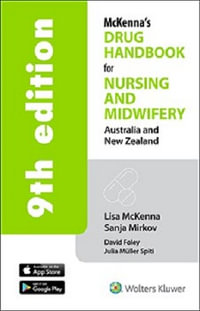
Australia and New Zealand McKenna's Drug Handbook for Nursing and Midwifery
Australia and New Zealand 9th edition
Paperback
RRP $87.95
$74.75
OFF

Kozier and Erb's Fundamentals of Nursing, Volumes 1-3 + Skills in Clinical Nursing + Nursing Student's Clinical Survival Guide
5th Edition
Not Supplied By Publisher
RRP $261.95
$195.25
OFF
